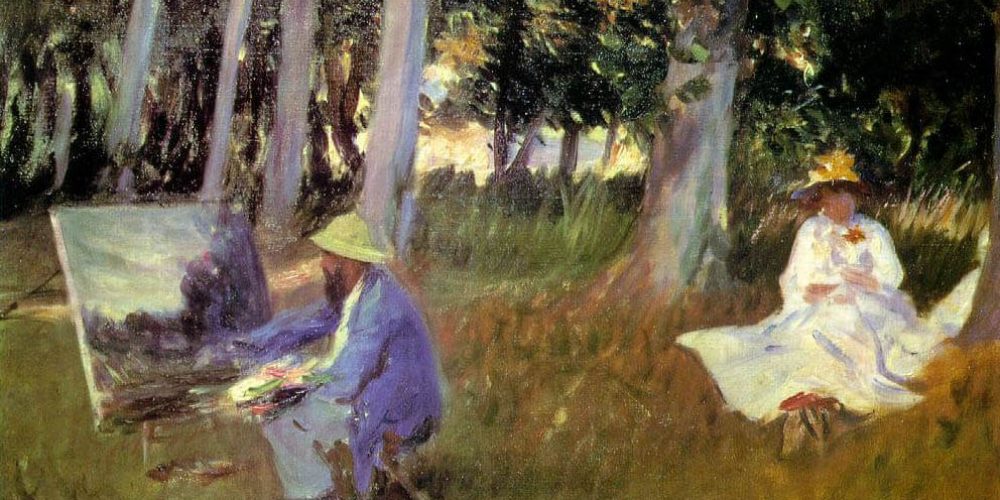John Singer Sargent once said “Cultivate an ever continuous power of observation…” One of the masters of painting inferring a painter can continuously learn and improve. Painting above, “Claude Monet painting by the Edge of a Wood”. The journey a painter takes is never static. The determination to create in paint a compelling work of art leads an artist to realize there will always be something to learn. The effort put forth is constantly being tempered, added to, enhanced, in so many ways, both consciously and not, such that I have come to see painting best viewed as a life long learning process. This series of Painter’s tips, are here to help advance your efforts. It won’t “get you all the way there”, nothing will, but should get you closer.
Here are a couple of good ones based on self critique. Something we all need to be able to do – assess the painting as objectively as possible to root out shortcomings such as drawing problems, compositional problems, color issues, and so on. Many artists find they can more quickly and accurately critique another artists work, than their own. In order for a painter to move forward and improve their work, self-critique can be a valuable skill. Here are a couple of tips that can help
- Always use a mirror while painting (or drawing). During a painting class, I will often give a participant a hand-held mirror for them to look at their painting in. For those new to this, they’re almost always surprised! The reverse mirror image gives them a fresh viewpoint. Sometimes they can see nuance they are missing when looking directly at the painting. It helps to solve drawing imperfections. Next time you paint a vase – look at your painting in a mirror to help get it symmetrical, and quicker. Look in the mirror to see the whole painting and its composition with a fresh eye. The fresh viewpoint even helps determine color harmony. This is a tip that once you begin using, you’ll find it difficult to paint without it.
- Line em up and write em up! For this, line up several of your paintings in a room on a table or against a wall. Take as much time as you like to just look them over. Have a seat. Which one do you consider the best? Why? Is it color? Composition? Can you put your finger on it? Which is the worst? Why? Use the mirror as described above also to look them over. As you look them over, begin writing down notes specific to each painting – your critical notes. Such as – “not unified between the elements well enough”, “needs better color”, “direction of light not consistent or unclear”, “no center of interest”, “tree line too patterned, not random enough”. Tag each painting with the notes – use a piece of tape. Do this for every painting. (You can use wide painters tape and write notes directly on it; or post-it notes). This can be very helpful for all kinds of painters whether you have a high output or paint just a few paintings per year. Important: I suggest to make sure you actually write out the critical notes. Seeing the critiques in your own handwriting, about your own works, makes this a full circle creative endeavor. I hope you find this a powerful tool in helping you discover areas to improve, and ultimately motivate you to make whatever change is needed to actually improve.
Feel free to email me to offer your tip suggestions. I’ll try to post some in the future.

